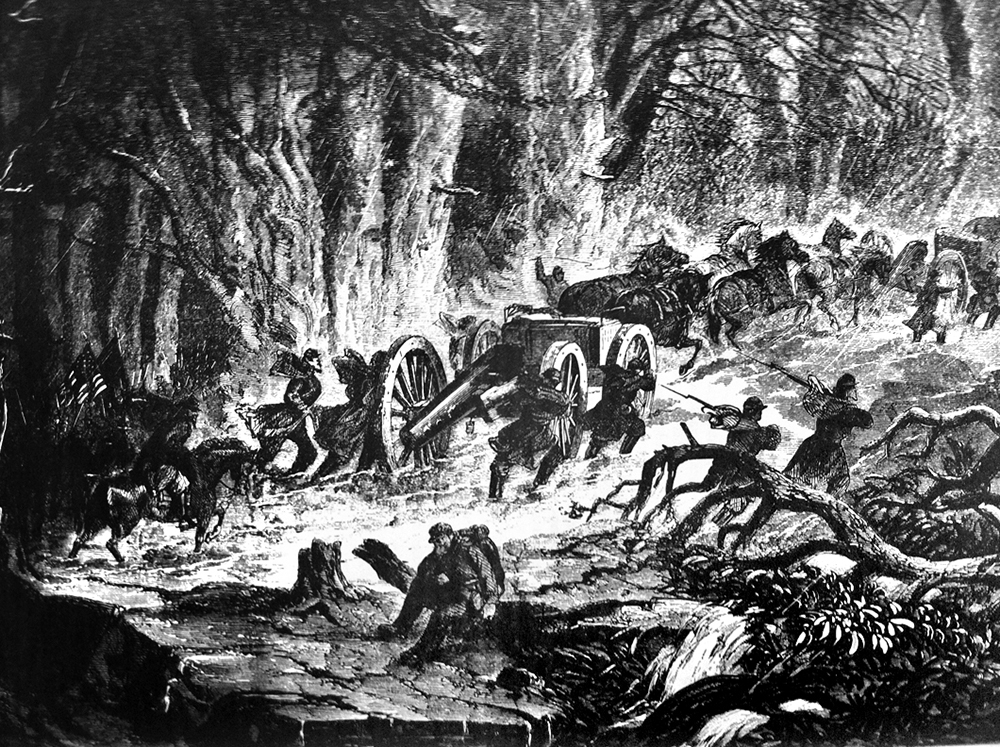View our Civil War Sequicentennial site
A half-century ago, Ralph Davis was a well-known resident of Soddy. He worked for the railroad, served as a deacon of Soddy Presbyterian Church and lived in his grandfather George Varner's antebellum home in the hollow just north of Soddy Elementary School. The home still stands. Ralph's wife, Edna, worked for many years as the school secretary.
George Varner acquired the property in the 1840s and farmed it in the 1860s. Like most residents of Soddy, Varner's sympathies were on the side of the Union during the Civil War.
Hiding beehives
Davis often told a story of an incident involving his grandfather during the war. Learning one day that Confederate troops were approaching his farm, George Varner hid his beehives in the unfinished second floor of his home, letting the bees fly in and out of the windows, thereby saving his honey, which would have been a tempting treat for scavenging Rebels to take from a known Unionist. According to the story, Confederate troops bivouacked in the grove near the Varner home, and Gen. Braxton Bragg himself invited Varner to eat with him. His wife, Rhoda Varner, was frightened that Bragg might "take George with them." Happily, that did not happen, and George Varner returned to his wife and family that night.
Is it possible to verify this account? To start, one must understand when Bragg might have been in Soddy. It is well known that Bragg was in Hamilton County in the summer of 1862 and the summer and fall of 1863.
It is fairly certain Bragg was not on the north (or west) bank of the Tennessee River in the Soddy area in 1863.
In 1862, however, Bragg came to Chattanooga in late July from Mississippi, along with the bulk of his army, then known as the Army of the Mississippi. That army advanced north from Chattanooga toward Kentucky in late August.
Bragg left Chattanooga on Aug. 27 and established his headquarters in Dunlap on Aug. 29. The army moved in two wings. One wing marched on Anderson Pike over Signal Mountain. The other wing, under Maj. Gen. Leonidas Polk, crossed the Tennessee River from Harrison to Dallas and marched parallel to Walden's Ridge north to Smith's Crossroads, now Dayton.
Chaplain Charles Todd Quintard recorded seeing Bragg with Tennessee Gov. Isham Harris and Gen. Simon B. Buckner on top of Walden's Ridge on Aug. 28, on the same road as one of the army's wagon trains -- but different from that of Polk's line of march.
Contemporary maps show that between Anderson Pike on Signal Mountain and Smith's Crossroads, there were two roads across Walden's Ridge to Dunlap, from Poe's Tavern now Daisy, and from Soddy.
9 miles to 'Loddi'
C. Irvine Walker, one of Bishop Polk's young officers, recorded that on Aug. 30, his regiment marched from "the banks of the Tennessee" (almost certainly at Dallas) 9 miles to "Loddi." Of course, there was no location within 9 miles of Dallas named "Loddi," only Soddy. Walker noted "here is a most remarkable spring, at least 25 feet in diameter, arising directly from the ground and flowing off in a large bold stream of blue limestone water."
Although not that large today, there are in fact several springs near the Varner home. Elements of another division of Confederate troops were at least two days ahead of Walker on the march, which would put many Confederates in the Soddy area on Aug. 28.
Davis's story was that Bragg visited the Varner farm and his troops bivouacked there. Walker and his regiment camped near a large spring at "Loddi," and many of Polk's almost 14,000 men marched through the area.
Bragg left Chattanooga on Aug. 27 and was in Dunlap on Aug. 29. The general was on Walden's Ridge on Aug. 28 on the road taken by Polk's wagon train, which was different than that taken by his foot soldiers, and a road indeed led from Soddy to Dunlap.
While there is no direct verification of Ralph Davis's story, there is ample circumstantial evidence to conclude that Braxton Bragg indeed visited George Varner in the afternoon or evening of Aug. 27, 1862.
Sam D. Elliott, a local attorney and historian, is the great-great-great grandson of George Varner. He is the author or editor of several books and essays on the Civil War. For more information, visit Chattahistoricalassoc.org or call LaVonne Jolley at 423-886-2090.

